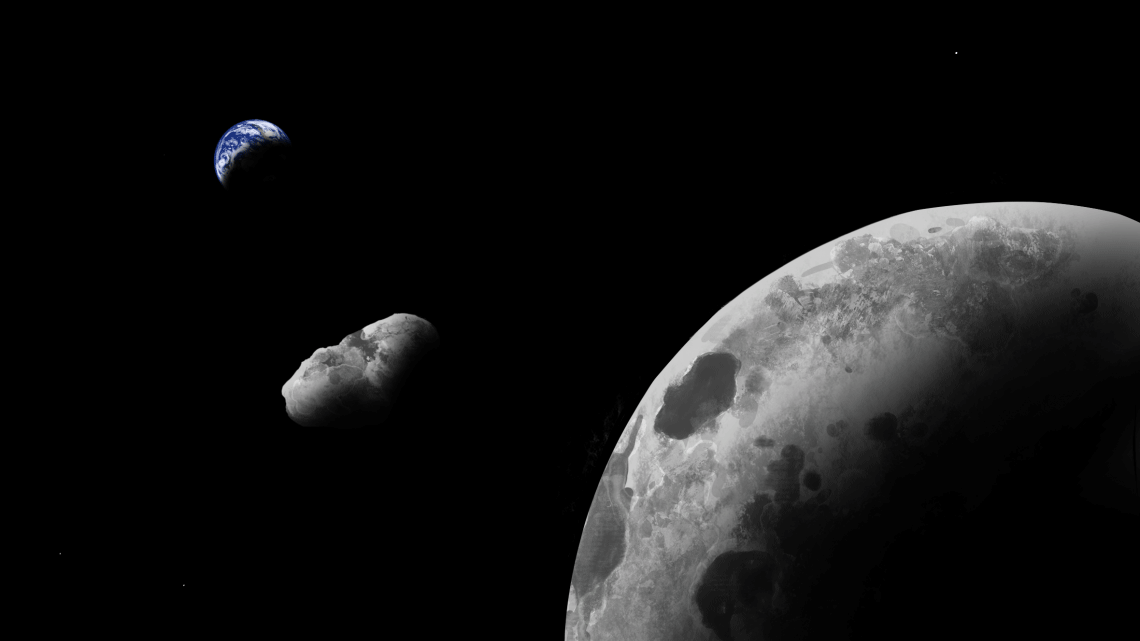 Illustration of Kamo'oalewa asteroid accompanying Earth and the Moon in solar orbit.
Illustration of Kamo'oalewa asteroid accompanying Earth and the Moon in solar orbit. A rare chunk of space rock is generating interest among researchers looking back at the history of the solar system.
The object is called Kamo'oalewa and was discovered in 2016. It's a near-Earth asteroid that happens to orbit the sun at the same pace as the Earth. University of Arizona planetary scientist Renu Malhotra is among those asking whether it was created by a collision with Earth's moon long ago.
"Things are knocking into the Moon, and the Moon is shedding material, it goes off into space, and some of that lands on Earth from time to time," she said.
The asteroid measures about 170 feet across and orbits 9-million miles from Earth. But astronomers found that its pattern of reflected light matches that from lunar rocks astronauts brought back from the Apollo missions. Scientists have found no other space objects that may have begun as a fragment of the moon.

By submitting your comments, you hereby give AZPM the right to post your comments and potentially use them in any other form of media operated by this institution.